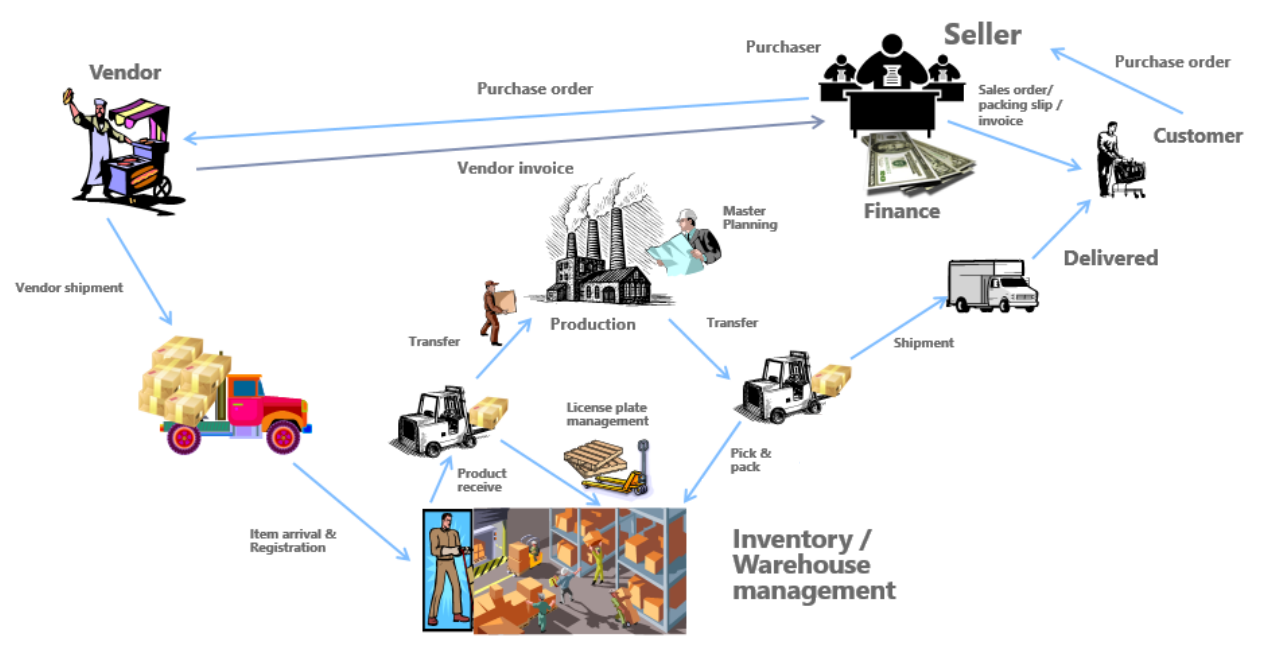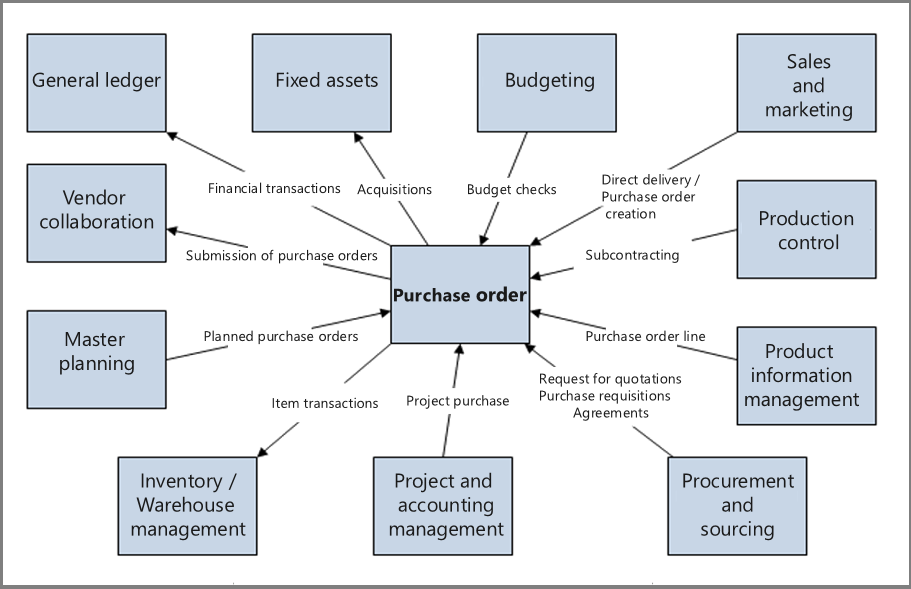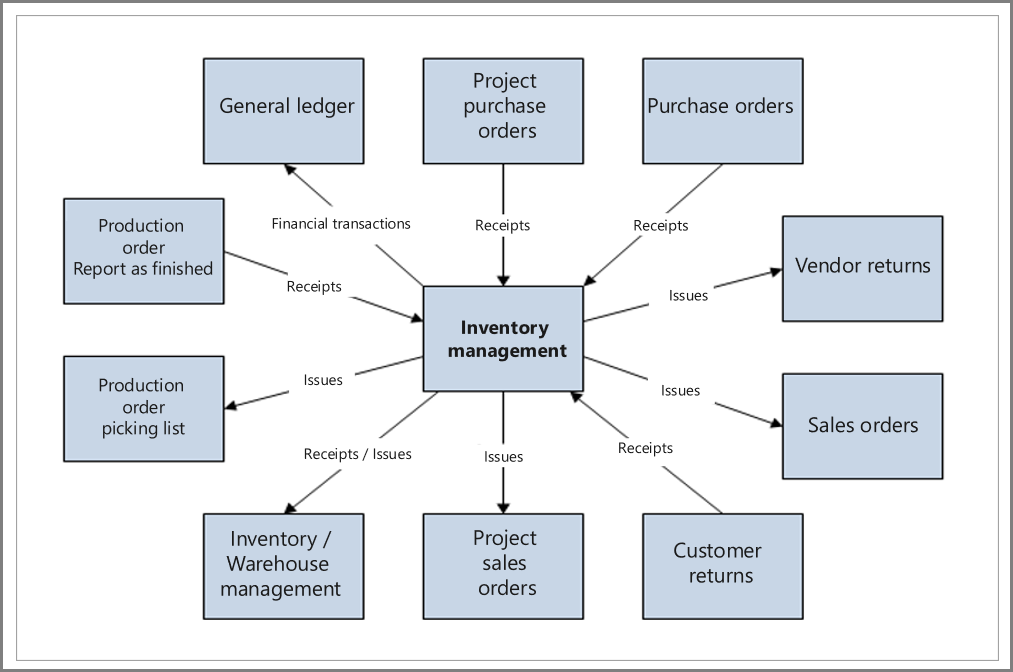Overview of Supply Chain Management
Distribution and trade in Supply Chain Management is organized into various modules and role-based workspaces that focus on daily tasks that are related to the assigned role.
Role-based security in Supply Chain Management and Dynamics 365 Finance helps keep financial and operational data secure.
Below are the responsibilities of operational leaders.
Increase operational efficiency - Trying to accelerate the speed and accuracy of the business operations with streamlined processes that effectively coordinate people, assets, and resources to reduce costs, improve service levels, and drive growth.
In Finance, the Fixed assets module controls the assets in the supply chain by integrating with the Inventory management module in Supply Chain Management.
The Human resources module in Finance, and Organization administration modules control resources such as people, machines, and vendors.
Improve strategic planning – The Master planning and Inventory management modules assist companies in improving strategic planning by providing a unified view of inventory, warehouse, manufacturing, service, and logistics with predictive analytics that turn data into insights to support better strategic decisions.
Optimize workforce productivity - Providing a single source of business intelligence that drives productivity from assets and resources, aligns employees toward strategic goals, and enables real-time response to organizational and customer demands.
Supply Chain Management offers tools and features with built-in intelligent controls such as charts, Key Performance Indicators (KPIs), and workspaces to optimize workforce productivity.

All incoming and outgoing funds will be recorded in the General ledger in Finance, and each bank has a corresponding account in the chart of accounts. This eases the reconciliation of bank statements with financial management transactions in periodic processing.

By using the Procurement and sourcing module in Supply Chain Management, you can perform all purchases, negotiate and create purchase agreements that are specific to a vendor, manage purchase orders with or without change management, approve workflow, and more. Your material managers can also make use of the supply risk assessment dashboard to understand the velocity of supply chain risks as well as the business impact of potential disruptions to your procurement cycle.

You can control the items in a warehouse location and handle their movement in the supply chain. Operations such as counting, transfer, quarantine, and quality controls are easily managed by using the Inventory management and Warehouse management modules.
All sales orders, negotiating and creating sales agreements that are specific to a customer, and managing return orders are performed by using the Sales and marketing module.
The Transportation management module can help you to find routes for delivering goods to your customers by using software to calculate costs and identify the best route based on the cost or time of delivery.
The next units take a closer look at each of these modules.